#Criticisms I have: the pacing and lack of proper development. The “ending” is also extremely rushed as well
Explore tagged Tumblr posts
Text
Hello, Devilman fans.
Toshin Devilman has an English scanlation now.
This manga has been one of the few Devilman alliterations that does not have much information avaliable about it online and I have been curious about it for some years now. It is also one of the only adaptations that does not feature Akira Fudo, Ryo Asuka or any other past major Devilman character as the main protagonist. Instead it focuses on a new character named Kei Kamishiro.
I want to give a big thank you to trafalgarlog for translating this manga. Be sure to support trafalgarlog by checking out his website right here, you will find other manga he has translated along with a link to his Patron and Ko-Fi: https://trafalgarlog.wordpress.com/
#Devilman#Toshin Devilman#Saint Fighter Devilman#I actually really enjoyed this for what it was. It brought some cool ideas to the table#One of my favorite things that it introduced was the Demon Tribes caste system.#Yoshihiro Iwamoto really went into a bit of detail with the ranking#I also feel like he drew some inspiration from Yugioh (lol) when it came to the character Kei and his dynamic with Amon#(Or lack thereof since it does not get explored 😔)#Other things I liked: The horror! It isn't as grotesque as other dvmn media but it has some affective moments.#Criticisms I have: the pacing and lack of proper development. The “ending” is also extremely rushed as well#since Yoshihiro Iwamoto found out about the manga's cancelation during chapter 5#Which is a shame because I do think this had potential and could have been a good Devilman adaptation for the kids#(Which is funny I know but look at the 72 anime)#Toshin DVMN
40 notes
·
View notes
Text
MARTHA JONES Is The Perfect DOCTOR WHO Supporting Character

Having recently rewatched Series 3 of Doctor Who, not only is it my favourite of new Who, but so is Martha Jones. I’d also go as far as saying she is the perfect supporting character.
First off, Freema Agyeman was the perfect casting decision. The showrunners were really impressed with her in the minor role she played at the end of Series 2. Instead of ignoring this fact, the writing brings up how it was Martha’s cousin who died at the Battle of Canary Warf. This accomplishes a couple of things; it explains how the same actress played two characters on the show without causing continuity errors. Then you have the Doctor forced to be reminded of said battle.
And Rose.
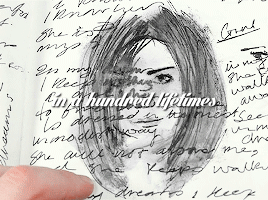
Which brings up to how the Doctor is still dealing with losing Rose at the end of Series 2. He needs a new companion and when a smart, clever, resourceful doctor presents herself to fill the spot, they both take it. The show gives us two doctors for the titular Doctor to choose from to accompany him. It’s obvious why he’d go for Martha given how scared the other candidate is. Unlike Rose, Martha was whisked into an adventure along with a hundred other people yet she’s the one who joins him in the TARDIS.
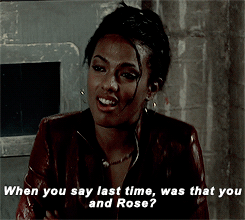

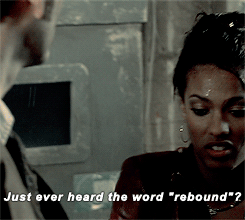
Rose’s shadow looms long over the Doctor. The Time Lord takes Martha to the same places he took Rose. People have criticized the showrunner Russell T. Davies of being obsessed with the character of Rose and the drama that came with it, but for me it just comes off as staying true to the character of the Doctor. He isn’t just going to forget about Rose and how in sync they were. That would be very disrespectful to Rose and her fans. Sadly this means Martha does get left behind as a character. She fulfills her purpose perfectly even though it means she cannot compete when it comes to Rose. It makes her character tragic and very sympathetic.

Snog her, you idiot!
Maybe it’s just me finding Freema and Martha attractive but as an audience member you really wish the Doctor could see Martha the way she sees him. Albeit, the Doctor shouldn’t really be dating any of his companions to be honest. Still, Martha isn’t getting enough out of their relationship or lack thereof which is sad.
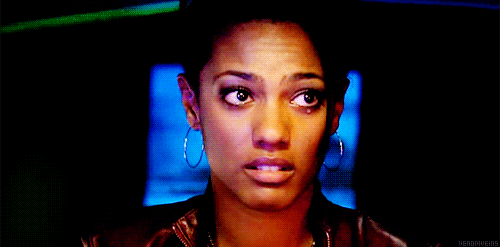
Speaking of sad, Martha can show her vulnerability as easily as she can be sassy and funny. She can stare at the Doctor with puppy dog eyes in one scene yet demand answers about him and his past the next. All these emotions come off naturally, both in the writing and with Freema’s acting. She’s just a perfect blend of a supporting character. Balanced like all things should be.
Now, having said that, there is a problem with Martha. Despite being a balanced character that also means she doesn’t have the highest of highs or the lowest of low points. For the most part, Martha lacks major strengths and weaknesses that would solidify her as a great character.

Martha’s fun even when she tries too hard to be funny.
For that to happen, Series 3 would have needed a Martha-centric episode. If she had wanted to go back to being a doctor for a while then maybe her personality would have shone through more. This would cause a detour in the story and mess with the pacing though. One could argue that “Blink” does that, but who’d want to get rid of that episode? Plus the Doctor-lite episode was needed so both Tennant and Agyeman could do more shooting for other episodes.

I have loads of ideas for a Martha-centric episode...
Martha is a perfect supporting character, as in she services both the protagonist, story and plot. Supporting characters just tend to not be fleshed out well enough to be great characters. Arguably this changes when Martha decides to leave the Doctor. I haven’t seen her adventures in Torchwood but (I will check them out now!) Martha’s return in Series 4 was glorious. When we last see her in Ten’s last episode she’s an outright badass. So there is growth and character development, I just wonder how much of that is offscreen.
Martha’s main weakness, if you can call humanity that, is her feelings of inadequacy brought on by her unrequited crush/love for the Doctor. It humanizes Martha, adding to the juxtaposition between her and the inhuman Time Lord. Again, serving the protagonist and the story perfectly. The one-sided love story just never goes anywhere. Martha’s decision to just get out is sensible and it makes her extremely likeable and wise. It provides a character arc for her, but it’s not exactly memorable nor does it propel the story into new heights.

Martha literally gives her last breath to the Doctor as they are about to suffocate on the Moon.
That said, Martha went way beyond the call of duty, sacrificing herself to help the Doctor. Especially during the two-parter "Human Nature/Family of Blood” where Martha had to witness the Doctor falling in love with another woman while trying to keep the Time Lord safe from evil aliens. All the while having to put up with the prejudiced attitudes of the early 20th century England.

Right before Martha schools her on all the bones in her hand that’s about to pimp slap her.
In the same two-parter, when the amnesiac Doctor-turned-human falls down the stairs, Martha comes over as soon as she hears of it. Concern for the Doctor’s wellbeing is the first thing on her mind. Sure, Martha’s trapped there with the Doctor being her only way out, but it never comes across like that. The things Martha endures are sacrifices she’s deemed necessary. It really speaks volumes about the true grit of her character.
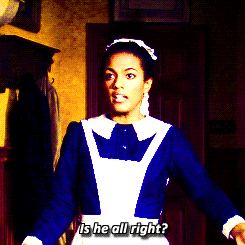
Waifu material.
She never becomes bitter or hardened by any of it either. Yet she isn’t without some sass either. When Martha’s told she should knock before entering, she steps back towards the door, knocks it and comes back. Martha Jones is such a well rounded character it’s a shame we only had her for a single season.
I’ll reiterate; all this this makes Martha my favourite New Who companion. It makes her the perfect supporting character.

I was going to make a joke about this, but I think the logo speaks for itself...
Martha’s own supporting cast reflects this as well. They all serve to paint a picture of Martha and pushing the story forward. Martha’s mother Francine is excelently utilized with very little screen time. Her skepticism towards the strange Doctor is only natural. It makes perfect sense for Francine to work with Saxon’s people who seemingly want to protect Martha like she does. This side plot in “42″ is actually the best part about the otherwise mundane enviromentalist episode.
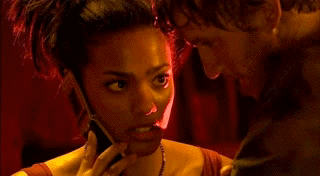
Martha isn’t a jokester, but she has her moments. Kudos to Freema’s versatility as an actress.
As a character though, Jackie Tyler, annoying as she could be at times, is far better though. Jackie’s flirty personality, her accent and overall attitude towards life just shines through her every delivery of a line of dialogue. There are plot involving Jackie’s dead husband coming back to life and creating a deadly time paradox, too. Whereas Martha’s dad dating another woman doesn’t have effect on the plot. It doesn’t even phase Martha herself, she just tries to steer clear and juggle between her mom and dad which is easy because by now she lives on her own. Drama free.
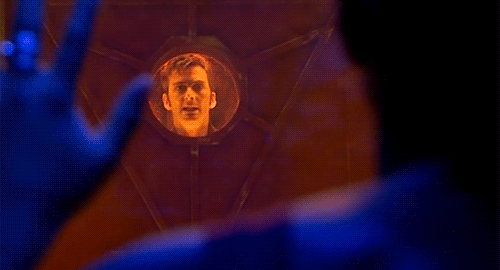
That is when she isn’t being jettisoned into the sun!
Side note, I’m glad the character got a happy ending, albeit not with the Doctor like she wished. After all the hardships she endured and sacrifices she made for the Doctor for very little reward, she’s earned a little peace and quiet. She wasn’t lost on a parallel Earth nor forgot her adventures. She didn’t “die” like Amy, Rory and Clara.
It would have been absolutely terrible had Martha died. She’s my favourite of the bunch so it’s good to know she’s still out there somewhere in the Whoverse. The fact she could be easily written back into the show some day warms my heart.
For future reference, should Martha come back to the show and should the writers decide to kill off her character... like they are doing with the show proper at the moment... then allow me to give the showrunners and writers some advice. If Martha has to die, make her sacrifice herself for the Doctor one last time. As a one final act of love towards the man (assuming he’s back to being a man).
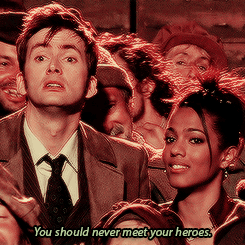
She’s talking about Shakespeare, but Martha’s line is very indicative of her relationship with the Doctor.
Don’t give us Mad Martha who decides to burn down whole cities full of people, okay. Don’t give us that “Martha kinda forgot her Hippocratic Oath” crap. You got that? Just making sure...
Anyway, Series 3 wasn’t the end for Martha and I’m so glad the character came back in Series 4 and like I said, I’ll be checking out Torchwood for more Martha appearances. But we’re here to talk about her as a companion so let’s get back on track.
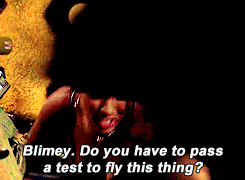
That’s what she said about my tangent.
Now, you could get a good episode about Martha’s family drama, much like how Rose changed time to save his dad. But it’s not really necessary. The family drama in Series 11 has certainly shown how dull and dreary stories like that can be. That is why, even though Martha and her family aren’t exactly great characters that provide great stories, they are perfect at providing a clear context to the imaginary world that the Doctor, the TARDIS and time travel represents.

Freema sells that magical moment of a companion stepping into the TARDIS for the first time perfectly.
Again, perfect supporting characters that don’t waste time away from the things people actually watch the show for. That said, I wouldn’t have minded seeing a cat fight between Francine and her ex husband’s new bimbo girlfriend!
Just a single scene like that would have been endlessly entertaining and damn memorable!
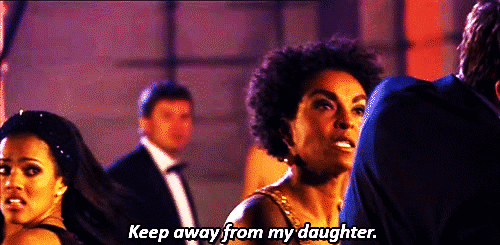
Imagine that but between her and the bimbo: “Keep away from my husband.”
Martha’s sister Tish fares a lot better as a character as far as personality goes. There isn’t really a sibling rivalry going on, but Tish’s remarks about Martha dating a science geek speaks a lot about both her and Martha’s characters. What they look for in a man. When the Doctor asks what a science geek means, Martha explains it’s just someone who’s passionate about science which makes the Doctor happy. Which is what Martha wants, whether she was telling him the truth or sparing his feelings with such an interpretation. Brilliant writing for the characters all around.

Tish working with both Lazarus and Saxon, even if both instances were brought about by Saxon himself, tells about Tish being drawn towards wealth and power.
She was even ready to “snog” a de-aged Lazarus!
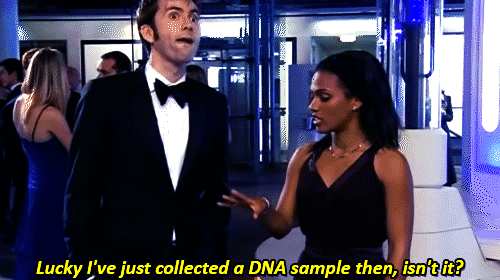
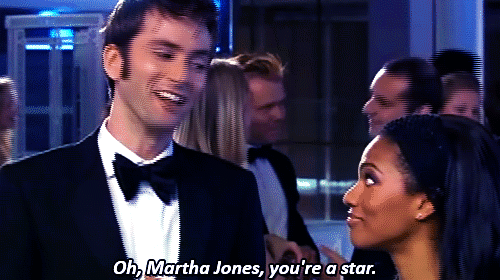
Damn right, she is! Not just a pretty face but smart too!
I wish we’d have seen more of Tish. Her interaction with Martha really created a contrast that benefitted both characters. In “The Lazarus Experiment” especially, Martha gets to shine. After helping her family escape, she goes back for the Doctor against her mother’s wishes. Later, Tish comes along. Martha takes control and takes Tish with her so that the Doctor has time to defeat Lazarus himself. Martha let’s the Doctor shine and in doing so shines herself. Tish acts as a great supporting character herself by asking who the Time Lord is. At this point Martha already knows because she’s asked him herself, demanding answers.

“We need to talk.” Never a good sign except in fiction.
Martha or the handling of her character is often criticized for how she had a thing for the Doctor. Her character was much more. In an early episode “Gridlock” we get one of Martha’s best moments; when she demands answers about the Doctor. She forces the Time Lord to come out of his shell, to stop pretending everything was all right. The Doctor tells Martha about being the last of the Time Lords which fits perfectly to the story of the Series.
Namely that the Doctor is not the last of his kind.
The Doctor also mentions how the Time Lords were all lost in a Time War, battling against the Daleks. It’s a great segway into the next two-parter story about Daleks themselves. The story flows really well with one thing leading to the next. The pacing is really good while the characters remain true to themselves. That said, it’s good to have Martha around to challenge the Doctor.

Asking seemingly harmless questions like this is vital for good supporting characters. We get to see the Doctor’s reaction to his home planet being brought up.
That said, I should mention a couple of things. In the episode “Smith & Jones” the Doctor kisses Martha to mark her with some of his DNA. This is done on the fly and while the Doctor had a plan, I dislike how this puts Martha in danger. Now, she doesn’t get into any serious trouble but considering how trigger happy the Judoon platoon upon the moon are, things could have gone real bad. This kiss does start Martha’s infatuation with the Doctor so there’s that.
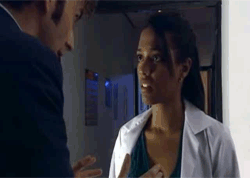
Wait, don’t snog her, you idiot! Now she’s in danger!
The Doctor’s indifference to cool and hot Martha does make him in return look cooler. Martha is essentially the Doctor’s cheerleader which, despite sounding as not complimentary, really is that. You need the audience to root for the main character and this is partly achieved through supporting characters singing their praises. Of course, the characters still have to earn that praise. You can’t just have characters emotionally validate themselves or others to the audience.
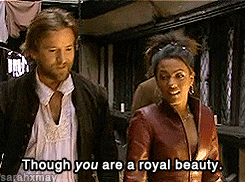
Though it doesn’t hurt when Shakespeare himself is singing your praises.
The downside to the Doctor’s indifference is that he does come across as a jerk at times. Now this can be either a good or a bad thing based on the audience. While Martha is perfect as a supporting character, you don’t want neither her or the protagonist to be perfect. The Doctor missing Rose, as annoying as that can be to some, is keeping true to the character. The Doctor is in mourning. It’s his grief period and Martha is there to help him through it. In doing so, Martha learns that she doesn’t want to wait forever for another person to notice her.
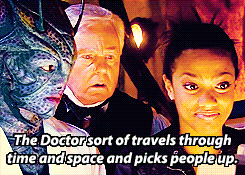
In one of the best episodes in New Who’s history, “Utopia” draws a parallel between Doctor and Martha and the Professor and his assistant Chantho. Much like Martha, Chantho is smart, kind and caring. Based on her interactions and demeanor, Chantho adores the Professor and like Martha with the Doctor, she has a crush on him. Both the Professor and the Doctor don’t notice these signs. For an individual episode this is all well and good, but given the secret about Professor Yana, this parallel is much more impactful than it seems at first.
Spoilers to a Series over ten years old; Yana is actually the Master. This twist alone, the callback to the concept of a fob watch allowing a Time Lord to masquerade as a human was a brilliant touch. Martha of course recognizes Yana’s fob watch instantly and again, Freema sells the feeling of terror and dread so damn well.
Later in the episode Martha recognizes the Master’s voice as Harold Saxon. The name we’ve heard all throughout the Series. A lesser show would not have given Martha’s character such insight. It’s one of the numerous details that make her character clever and likeable.
Unfortunately, likeable characters aren’t always the most compelling ones. This makes Martha an underappreciated companion in the series history. While Martha is my favourite, I can’t really blame the detractors. Martha Jones served her purpose on the show which meant couldn’t shine as brightly of a star of her caliber. I’d still take her any day over Clara Oswald who was such a bad supporting character that it encroached on becoming the Clara Who show. And I say this as someone who loved the past and future Claras and Jenna Coleman playing the character(s).
Anyway, back to the actual episodes. While context is key, I find it interesting how the Master kills Chantho, showing no regard for her life. Now, the Doctor does care about life and he’s risked his own life for Martha many times. Still, being around the Doctor, much like with the Master, is dangerous. Neither can truly love their companions the way they want. That parallel is fascinating and I’m glad Martha was allowed to walk away from it of her own free will. Definitely one of the reasons this Series has the best writing out of New Who.
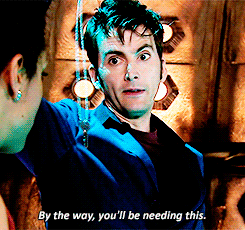
One of the few times the Doctor rewards Martha’s loyalty and bravery. Her reaction to receiving a key to the TARDIS is everything!
Speaking of writing. Before Martha says her goodbye, she has to walk the Earth and spread the gospel of the Doctor to the people of the world. Many have criticized how the show made the Doctor out to be a god who regains his power through prayer essentially. Rightfully so because even in context the twist does feel outlandish albeit totally awesome. Subjectively I’d say it’s one of the best moments in New Who.
Basically, the people have been subliminaly made to vote Master/Saxon into office. Now the Doctor has tapped himself into the same telepathic field and receives prayers, the word “Doctor” across the world. This turns him basically invincible for a time. Time enough to defeat the Master.
Because the telepathic field had been established in a prior episode and its effects had been reincorporated over and over again in the form of a drumming that the Master himself heard inside his head, I find that the twist is properly set up. That and because Martha has spent a whole year travelling around the world acting as a cheerleader for the Doctor.
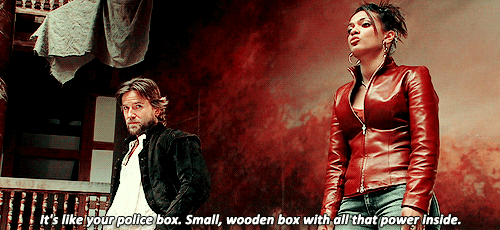
The best cheerleader you could ever hope for!
Though how the Doctor’s orders relayed by Martha never reached the Master’s ears is a mystery. Martha was aware of a traitor though and she spoke to her accordingly, feeding false information. I doubt she told the people about the telepathic field. The Master could not put two and two together when the Doctor himself told of the plan. To the Master it was just hope and prayer.
Suffice to say I have mixed feelings about the final twist. None of this detracts from Martha Jones as a companion though and that’s why I wrote this blog post about her. If you’ve managed to get this far I thank you.
Boy, that was a lot of out of order, wibbly wobbly rambling about a show that I love and a companion I adore. Started well, that blog post.

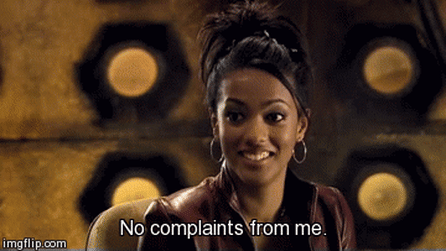
<3
19 notes
·
View notes
Text
Ranking : John Carpenter (1948 - present)

If one were to name off ten American directors from the past half-century or so in rapid fire fashion, I’d be willing to put money on the table that a vast majority would have the name John Carpenter on that list. His impact on horror, suspense and psychological thriller films is undeniable, and his prolific ability to score his films with iconic music he creates puts him in the realm of legends. For a director that dwells in the areas usually set aside for disposable box office fodder, it is surprising that at least five of his films (and possibly more, depending on who’s doing the debating) could be consider bonafide classics.
Perhaps the most interesting thing about putting this list together was the discovery and true understanding of just how much range that Carpenter is capable of, even if his films are distinctly his both in terms of genre-based elements and directorial style. When it comes to the films Memoirs of an Invisible Man (a personal favorite from my pre-teen years) and Starman, I didn’t even realize they were John Carpenter films because they were so different from what I’d come to know him for. Revisiting the films I was familiar with gave me great joy, and taking in the films I’d overlooked or passed on gave me a deeper understanding of John Carpenter not only as a creative spirit, but as a man trying to stake a claim to his voice in an industry famous for conformity.
With that being said, I took all eighteen of John Carpenter’s feature length films and ranked them in terms of my personal enjoyment and opinion. As always, the floor is open for discussion, so feel free to share your thoughts and open up a dialogue, and enjoy!


18. The Ward (2010) I’m going to be 100% honest with you all… coming in to this list, I pretty much had already decided that Ghosts of Mars was going to anchor this list. Fifteen movies in, it felt like my prediction would come to be. But then, something funny happened… The Ward showed up in my mailbox courtesy of Netflix DVD. I watched the film, and so many other films came to mind : Girl, Interrupted… One Flew Over the Cuckoo’s Nest… Shutter Island… Session 9… Unsane… The Jacket… the list goes on and on. That’s the thing about this film… nearly 40 years in, the last thing you’d expect John Carpenter to be is derivative. The Ward really wants to be an asylum thriller, a revenge-based ghost story and a period piece, but it never really commits to any of its aspirations, and what we’re left with is 90 minutes of Amber Heard, and in an information age obsessed with cancel culture, what’s going on in her personal life is infinitely more compelling than what she’s going through in The Ward. There are some good shots of fire in the film, and Mamie Gummer is acting circles around everyone she shares the frame with, but otherwise there’s not much to this one. Hopefully this won’t be the last film of Carpenter’s career.

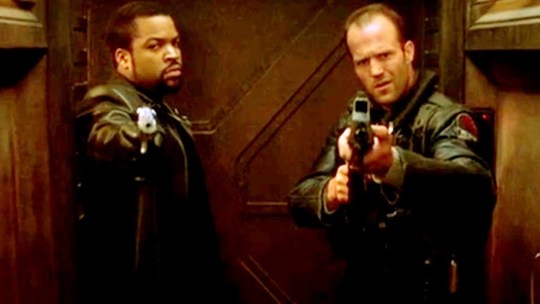
17. Ghosts of Mars (2001) If nothing else, Ghosts of Mars is an ambitious film. What it lacks in coherency, it makes up for in its amalgamation of ideas. The film is all at once a prisoner transport film, a film about a team of crack operatives, a film featuring a revolt and a tale about respecting the land that you intend to exploit for its resources. It sets itself up to be a John Carpenter take on Rashomon, with a number of stories being told through a singular unreliable narrator (due to the lack of those left to tell their own story). While there are some good ideas present in this film, not to mention some wonderful examples of non-traditional casting for an action movie, Ghosts of Mars falls short in its need to be everything to everyone. The film has garnered a cult following since its release, but as someone who saw this in theaters during its initial run, it still doesn’t do it for me.

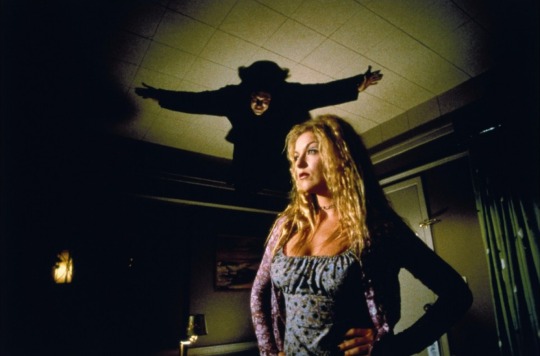
16. Vampires (1998) If From Dusk till Dawn isn’t enough to satisfy your Vampire Western cravings, then I humbly submit to you John Carpenter’s swing at the mixture in the form of Vampires. All the earmarks of both genres are present : a crack team of experts hit hard and early, an undercurrent of religion that neither praises nor damns it, a seemingly insurmountable antagonist with a single-minded blind focus, and even a damsel in distress forced to rough it with the roughnecks. Like many of his films, the Carpenter score plays unofficial star against the bananas series of events laid out. Speaking of crazy events, leave it to the likes of James Woods and Daniel Baldwin to take what could be best classified as pulp material and elevate it into the realms of honest entertainment. While not as flashy or fantastic as some of his previous films, the special effects work is effective (no pun intended), with a nice batch of memorable kills sprinkled throughout the film. If this film would’ve been made in the 1980s, I would argue that it could’ve been timeless, but unfortunately, it screams of the 1990s in all the ways that make a film dated, which is even funnier when you consider it was released near the end of the decade. Vampires is fun, but I’d be lying if I called it a classic.

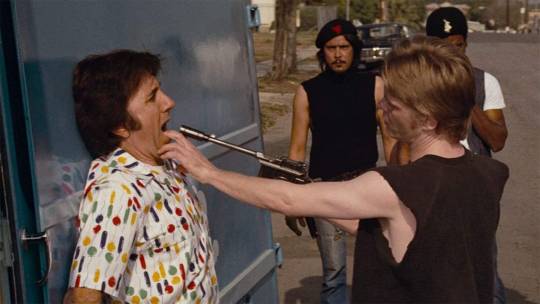
15. Assault on Precinct 13 (1976) Assault on Precinct 13 marks the proper feature debut for John Carpenter, with Dark Star essentially being a glorified student film. Interestingly enough, the film has a ton of representation across the board in its casting, making it one of the more diverse films released on a major level with its Black lead and strong supporting cast featuring women, Black and Hispanic actors/actresses. At the time the film was released, the gang problem was going from an underground and isolated situation to more of a widespread panic, and Assault on Precinct 13 provides plenty of subtext in terms of how gangs are viewed, the perception of their impact on the community and, most importantly, their everlasting struggles with the police. Speaking of the police, there are some subtle jabs at the inept practices of police in terms of administration and the way the handle prisoners, all of which lead to a perfect storm of despair for our protagonists.


14. Escape from L.A. (1996) This film marked the final collaboration between Kurt Russell and John Carpenter, and what an odd one to finalize such a rich and fruitful collaborative relationship. There are some things about the film that definitely work… Snake Pliskin is (and always will be) magic on the screen. Los Angeles certainly had the landmarks and the culture suitable for stylizing into a post-apocalyptic labyrinth of dangers. The statements the film makes on the moral majority and the isolation of people over cultural and ideological differences works as a harbinger for what could be in an extreme example, and has only become more relevant as time has passed. That being said, this film seems to not know whether it wants to be a comedy on the sly, or whether it’s just accepting of taking the often occasional odd detour for seemingly aesthetic purposes, which makes sense when one realizes that the film spent a decade in development hell simply because Carpenter was afraid to pull the trigger on a script he felt was “too light, too campy”. While a departure in comparison to Escape from New York, and definitely a tonal shift from the vast majority of the Carpenter films, it does have its moments… unfortunately, the moments are not frequent enough to put this one in the upper echelon of Carpenter’s work.

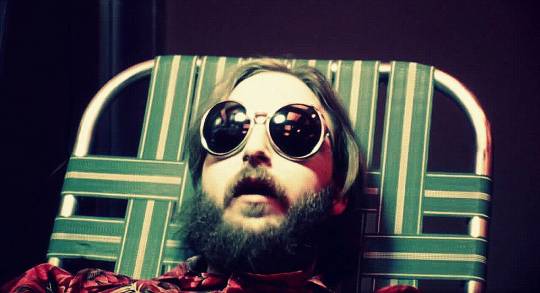
13. Dark Star (1974) For a debut film, Dark Star already had enough elements to be distinctly John Carpenter… the use of an ensemble cast, DIY special effects, a John Carpenter score, and hilariously, a Kurt Russell facsimile in the form of Cal Kuniholm. Oddly, this is really the only proper science-fiction film in the Carpenter canon (outside of the flop turned cult semi-classic Ghost of Mars), with several pieces of machinery requiring voice casting due to their intelligence and autonomy. Dark Star is also unique within the Carpenter legacy due to its reliance on wit, logic and humor more so than star power and wild premises, making it one of the more cerebral films made by Carpenter. On a personal note, my old friend Thomas spent YEARS trying to get me to watch this film, and after finally taking the time to do so, I’d love to have those years back to commit to the fandom of this film. It’s sadly been a bit lost to time, but it’s one of the John Carpenter films that I like to recommend the most, as it definitely deserves to be remembered.


12. The Fog (1980) After a massive hit like Halloween, I’m sure expectations from viewers and critics alike was sky high. With his follow-up after his first foray with fame, John Carpenter released The Fog, a supernatural affair with a much more deliberate pace than anything he’d previously released. Perhaps it was this slower, more methodical approach, combined with an extremely powerful use of subtle practical effects, that makes The Fog feel more like an uneventful slow burn than it actually is. More so than any film he’d released previously, The Fog pulls you in over your head into its tone and mood, and while nothing much on the fantastic side occurs, there are levels to visual stimulus used to engulf viewers in an emotion matching those within the world of The Fog. The sound design for The Fog does a great bit of the heavy lifting as well, which is something that should be noted, as it is some of the best work in that realm that Carpenter and company executed for any of his films. A subtle masterpiece, but it feels like the victim of being made on borrowed time, kind of like an album made by a band while in the midst of touring their breakout release.


11. Prince of Darkness (1987) In-between two of John Carpenter’s most outstanding and wonderfully outlandish offerings came Prince of Darkness, a deeply methodical slow burn that parks itself firmly in the intersection of science and religion and mines it for horrific fodder. Tinges of science fiction, mystery, horror, espionage and the supernatural are all working in tandem to create a literal house of horrors filled with intellectuals blind to the proof right in front of their eyes. As the midpoint of Carpenter’s self-appointed Apocalypse Trilogy (which also features The Thing and In The Mouth of Madness), it certainly continues the tradition of unfolding mysteries and threats that transition from vessel to vessel. Carpenter’s score is doing overtime in terms of setting the mood, nearly establishing itself as a physical presence in the manner that it accents what is presented visually, and the use of color is a bit more expressive than what is normally found in the Carpenter production style. The insect motif is also a nice touch, as it serves to literally make your skin crawl moments before traditional scares occur.

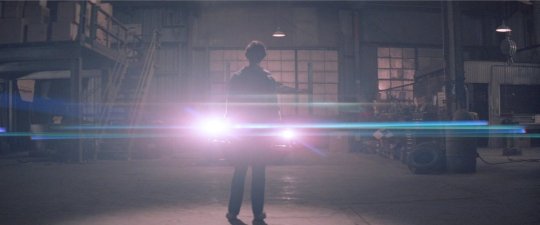
10. Christine (1983) On paper, the combination of a Stephen King story told through the lens of John Carpenter sounds fantastic, and Christine is definitely the type of Stephen King story that can fit the Carpenter bill. Being a teenager can be a frustrating section of life, and for the vast majority, the day that you own a car symbolizes an important step towards maturity and freedom. Stephen King took this ages old scenario and made it a deeper story about finding yourself outside of the protection and orders of others (be it dictator parents, picture perfect friends or a possessed vehicle), and John Carpenter picks up on every nuance of this subtext. Outside of Harry Dean Stanton, the film is cast mostly absent those in the realms of star power (and with all due respect, calling Stanton a traditional star is a stretch)... for my money’s worth, I imagine that Carpenter did this consciously in order to let Christine be the star of her story. Halloween proved that Carpenter knew a thing or two about horror films, and Christine shows that he can apply that formula with such precision that an inanimate object becomes terrifying.


9. Starman (1984) Starman is one of those movies that I’ve always been familiar with, but never took the time to seek out and watch… so much so that I didn’t even realize that it was a John Carpenter film until I started working on this list. Tonally, the film differs from other John Carpenter offerings, as it has more Spielberg energy to it than it does Carpenter stylings (although it does embrace the use of practical special effects, albeit outside of a battle or shock-based context). The invasiveness of an alien lifeform morphing into your lost love one right before your eyes is certainly jarring, but it makes for a stellar hook that yanks the viewer right into the heart of the narrative matter. By using Jeff Daniels’ Starman as a surrogate for someone with no understanding of human customs, Carpenter is able to extoll core human values without coming off as holier than thou or preachy, all the while setting up a buddy road trip scenario in order to accelerate the interaction between his leads and capture some countryside photography along the way. For a director known for doing the most, Starman is a surprisingly tender venture, succeeding via the use of less from a director associated with always doing more.


8. Village of the Damned (1995) The best thing about Village of the Damned is how much it feels like John Carpenter hitting the randomizer button and striking gold with every bit of output. Do you dig small creepy towns? How about unexplained weather anomalies? Strange occurrences and phenomena? A cult made up of psychic kids with mind control abilities that woke up and chose violence? Maybe even a little conspiracy and paranoia? This film has all of that and then some. The film actually stands out as one of the best looking in the Carpenter canon, with a surprisingly vivid use of color implemented that offsets the shades of grey the children are bathed in. Everything about this movie is drenched in a heavy creep factor, especially the performances of the children, who manage to be so pitch perfect in their characterizations that it is genuinely unsettling. Watching this story unfold is one of the most enjoyable experiences presented by Carpenter, and it stands as an example of when a fascinating concept is met with brilliant execution.


7. Memoirs of an Invisible Man (1992) Memoirs of an Invisible Man came out at an interesting crossroads between my budding interest in film, the idling of John Carpenter’s career, and the downward spiral that was Chevy Chase’s career. Looking at it through an objective lens is rough, but time (and the task at hand) has allowed me to do so, and I find that I still enjoy this film as much now as I did then. The special effects at the time were downright jaw-dropping, and many of them still hold up. The practical effects help sell the illusion, so much so that the illusion is implied in points that it would be a budgetary burden and still manages to not distract. With Chase in the lead, one would imagine that the film would be funny, and while not a comedy, it does allow for several beats of well-timed comedic moments. At the time, the film’s narrative was panned for being uninspired, but in my opinion, some of the harsh judgement may have come from the expectations set by the careers of Carpenter and Chase. While not your standard John Carpenter affair, the film does showcase his ability to “play the game” and create solid work, even if it continues to be harshly judged and misunderstood.

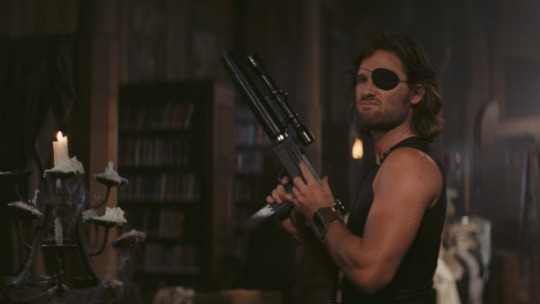
6. Escape from New York (1981) When it comes to actors connected to directors, it’s usually not long before the pairing of Kurt Russell and John Carpenter comes up, and Escape from New York marks the genesis of this cinematic bond. With his traditional good looks, no-nonsense attitude and penchant for sharp wit, Russell was the perfect leading man for Carpenter’s vivid cinematic exploitation ventures. As for Escape from New York, the city had yet to undertake its Disneyfication of the 1990s, and the movie stands as a bleak vision of what the crime and moral dissonance of the city (and era) could lead to if taken to the extreme. Creating the worst place in America as an inescapable pit to drop the President into immediately sets the stakes high, and with little to no background, we are given the one man seemingly capable of achieving against impossible odds in the form of Snake Pliskin. Like some kind of urban Mad Max, Escape from New York gets wilder and wilder as the minutes tick away, making it one of the most iconic New York films to date, and one of the strongest offerings from John Carpenter during his legendary run.

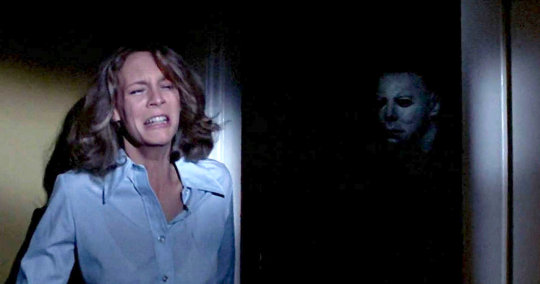
5. Halloween (1978) The first of many John Carpenter classic films, and arguably the most iconic of the bunch. Three films in, John Carpenter not only managed to turn one of the biggest profits in independent film history, but he created one of the all time great movie monsters in Michael Myers. The film put Jamie Lee Curtis on a rocket to success, turning her from a burgeoning television hopeful to a certified rising Hollywood star in just one role. In terms of pure production, the trend of growth continued for Carpenter as his cinematography gained more freedom of expression, the performances from his actors and actresses felt more natural, and quite possibly most importantly, his scoring ability was hitting maximum resonance, with the main theme of Halloween being equally as iconic as Michael Myers himself. The film has become an October staple for the masses, but manages to be enjoyable any time of the year due to its sheer ability to entertain and frighten audiences. If one were looking for a singular example of the John Carpenter aesthetic, Halloween stands out as a smart choice. Bonus points to John Carpenter for giving the Howard Hawks produced version of The Thing a shoutout two whole films before remaking it.

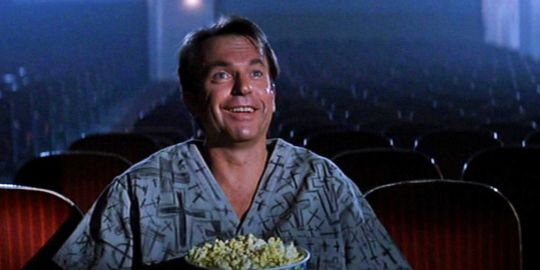
4. In the Mouth of Madness (1994) Films about collective psychosis are nothing new… be they fodder for popcorn consumption such as Fallen or Identity, or teetering on the realms of art like Jacob’s Ladder, they are always a strong foundation for something memorable. Maybe that’s why In the Mouth of Madness seems at once exciting and familiar while watching it, as collective psychosis provides John Carpenter with plenty of ingredients to make his trademark-worthy best. Building an entire referential lore around fictional fiction writer Sutter Cane builds all kinds of abstract immersion layers to explore, especially with direct references (and delightful digs) at Stephen King and his Multiverse. Sam Neill and Julie Carmen take us by the hand and yank us through the innovative twists and turns with wonderful chemistry, with Neill giving an especially cavalier performance. The film has a billion and a half production touches that put the creep factors on overdrive, with some of the directing choices nearing the realms of Lynchian. It’s also a nice touch to hear Carpenter back in the scoring chair (even in a shared capacity). Films like this one aren’t done justice via rumination, review or commentary… it’s best to just dive in and deal with the repercussions on the other side of it all.


3. They Live (1988) John Carpenter has made some amazing films in his time, but there are a small chosen few that contain genius-level writing and execution. Of this upper class of films, it’s arguable that They Live is both the most entertaining and the most thought provoking in terms of what it is saying (not to mention how much more relevant that message has gotten over time). A damning examination of capitalism, mass consumption, class divides, media influence and the use of police state tactics, Carpenter paints his science fiction with bold strokes of relevant facts that many often choose to ignore. The action in the film is top notch (including quite possibly one of the best fight scenes ever captured on film between Roddy Piper and Keith David), the makeup work on the aliens is instantly iconic, and the story not only sticks with you, but contains aesthetic elements reminiscent of Jenny Holzer’s influential artwork while being used for an identical purpose. If this list centered solely on John Carpenter minor box office successes that became top tier cult classics, They Live would likely occupy the top spot.


2. The Thing (1982) The Thing is one of those movies that works on so many levels that it’s hard to fathom. The shorthand used to set up the story gives you a clear understanding of the situation with minimal use of exposition that is replaced by loads of character and world building. The threat is initially unclear, but the indication of its eventual impact kicks off the film with context that is only understood after your first complete viewing. John Carpenter turned over the scoring helm to Ennio Morricone, perhaps the only individual who could score a Carpenter film better than Carpenter himself, and the results are classic. The special effects work is brilliant, as it is not only initially shocking to see the terrifying transformations the creature undertakes, but it is deeply traumatic in a way that sticks with viewers permanently. Carpenter could not have asked for a better ensemble cast, especially considering that it seems like everyone came prepared to play team ball rather than try and outshine one another. It’s always fascinating to me that this film was widely rejected both critically and at the box office upon release, as it took me way too long to get around to this one (and I was only 3 at the time of release). I’ve always encountered nothing but deep fandom for the film, and rightly so, as this film is a masterpiece that deserves every piece of praise it receives.

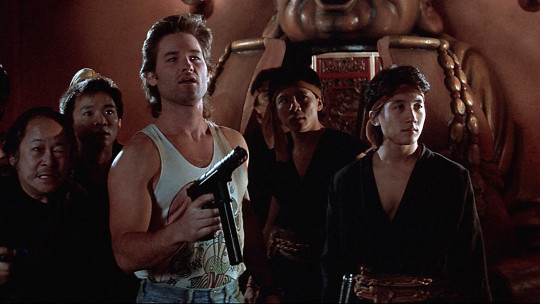
1. Big Trouble in Little China (1986) What doesn’t this film do right? Kurt Russell is giving his all as Jack Burton, and the film beautifully wraps itself around him in a hurricane of action-based slippery slopes. Setting the film in San Francisco automatically gives it a memorable aesthetic, and locking down the majority of the film in iconic Chinatown is nothing but cinematic gold. We’re told that we’re going to get an unbelievable story, then we meet our everyman that will guide us along on our journey, but very quickly his expectations (and by extension, ours) are blown clear out of the water, and things continue to escalate at an exponential rate. Memorable runs in high quantity and quality for this venture… some of the most quotable John Carpenter film lines come from Big Trouble in Little China, his score for the film ranks high among the canon, the special effects are electrifying (pun intended), the action is high octane, and the martial arts is treated with complete respect in its presentation. Outside of They Live or Vampires, this is arguably the most fun film of the Carpenter collection, and is almost guaranteed to turn the unfamiliar into fans.
#ChiefDoomsday#DOOMonFILM#JohnCarpenter#DarkStar#AssaultOnPrecint13#Halloween#TheFog#EscapeFromNewYork#TheThing#Christine#Starman#BigTroubleInLittleChina#PrinceOfDarkness#TheyLive#MemoirsOfAnInvisibleMan#InTheMouthOfMadness#VillageOfTheDamned#EscapeFromLA#Vampires#GhostsOfMars#TheWard
0 notes
Text
Episodes Review: ‘Islands’ (S08E20–27)
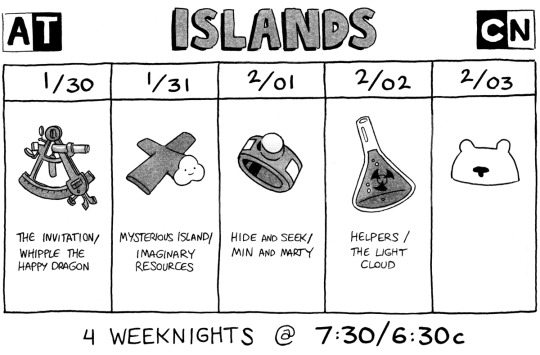
Airdate: January 30–February 2, 2017
Story by: Ashly Burch, Adam Muto, Kent Osborne, Jack Pendarvis
Storyboarded by: Sam Alden, Graham Falk, Polly Guo, Tom Herpich, Seo Kim, Hanna K. Nyström, Kent Osborne, Aleks Sennwald, Pen Ward, Steve Wolfhard, Somvilay Xayaphone,
Directed by: Elizabeth Ito, Cole Sanchez (supervising), Sandra Lee (art)
Here we are: Islands. This is the second miniseries that the creators of Adventure Time have made, after Stakes (2015). I was a big fan of the last one, and I particularly enjoyed this, one too. I have quite a bit to say about it, so instead of doing a recap, I’m going to jump right into what I have to say about the 8 episodes that aired this week.
What Works... What Doesn’t...
Within the middle of Islands are arguably two of the most emotionally compelling episodes that the series has ever produced: “Hide & Seek” and “Min & Marty”. Both of these take characters we already knew about (Susan and Martin, respectively) and have them interact with new characters (Frieda and Minerva, respectively). In the end, we learn a great deal about what makes them them. I have gained a new respect for Susan, with the revelation that she was forced to betray her friend (and possible crush). Likewise, Martin’s characterization makes much more sense now—he was not originally an evil guy, but his experience losing Finn and Minerva presumably broke him.
I was worrying how the show was going to handle Finn’s mother, but Minerva is an excellent character. It now makes sense where Finn’s heroic traits—his desire to help others, his inability to rest until wrongs have been righted, etc.—come from, as his mother is a Helper (which is basically a person with the expertise of the best doctors, but with the bed-side manner of the best nurses). I had predicted that the show would present Finn’s mother as a some trite warrior-goddess, so I’m glad Adventure Time instead went down the medical route instead. It’s fresh and creative, and it also makes Finn’s subplot in “Do No Harm” more relevant.
It is rather heartbreaking to realize that Minerva’s post-mortem computerized existence means that Finn will probably never be able to see his mother again, but at the very end of Islands, when Finn slips on the VR headset and is able to embrace his mother in virtual reality, this heartbreak somewhat subsides, if only for a moment. Finn got the chance to meet her, Minerva finally learned that he didn’t die, and the two finally connected with one another. Finn leaves the island with tears in his eyes, and it’s a bittersweet moment. He met his mother, but he can’t physically interact with her. This doesn’t really matter, however, because in the end, Finn’s mission was a success, and he now knows that Minerva is a wonderful, caring mother whom he never had the pleasure of being raised by. That knowledge, and sense of inner peace it brings, is worth all the Finn-cakes in Ooo.
Unfortunately, the beginning three or so episodes after the premiere are, to put it bluntly, somewhat unnecessary. While “Imaginary Resources” is just really funny (Man-BMO is horrifyingly hilarious), “Whipple the Happy Dragon” is a non-starter, and “Mysterious Islands”, while certainly cool, doesn’t really establish much outside of what we already knew (namely that humans are great at killing themselves via their technology). This isn’t to say that these episodes are bad—they are not, and this needs to be stressed. However, the pacing of the miniseries and ultimately the character development within are affected by them. Perhaps Zack Blumenfeld of Paste magazine puts it best when he writes:
An origin arc done well should hit hard in the feels department. And there are moments of Islands that do so, most notably the heartrending story of Susan Strong (Jackie Buscarino) and her childhood flame, Frieda, as told in “Hide and Seek,” the emotional peak of the miniseries. [But] none of the Finn-centric moments in Islands has as much impact as you’d expect. Perhaps this is because Adventure Time here makes inefficient use of its 11-minute format; Finn simply isn’t given the time to process the society he discovers, and the “Islands” episodes that would be totally fine as one-offs—the deadpan, hilarious “Whipple the Happy Dragon” and the sweet “Mysterious Island”—instead take valuable time from the character-driven focus.
If we compare how Islands functions to Stakes, one will see that the former goes from about a 3 to a 9 really fast once we hit “Hide & Seek”, whereas the latter is consistent all the way through. This issue with Islands is perhaps its biggest detriment... and honestly, probably it’s only detriment. But it can’t be ignored.
MVPs
You can probably already guess who I’m going to praise.
Yup.
Hanna K. Nystrom and Sam Alden.
Both do just stellar work. Sam’s episodes go from good to great, in that order. Hanna’s episode is, to put it bluntly, perfect. She and Aleks Sennwald do wonders with Susan, giving her depth and a purpose. Susan, for the longest time, felt like an abandoned and awkward season two story arc, and so with the reveal that she was a Seeker, her character seems finally justified.
I also appreciate that Hanna inserts people of color into her episodes. First, it was Marceline’s mother, and now Frieda. This diversity is great, and the show does it in such a low key-yet-major way that it successfully normalizes what is already very normal feature of human society (namely, that people of different shades, beliefs, and cultures all call this planet home). It’s sad that shows have to ‘normalize’ something that is as important as the reality of diversity (since it arguably should be reflected in media in the first place), but Adventure Time succeeds, and I would argue makes the world a bit of a better place.
Humans and Technology
Whereas Stakes was a meditation on the eternal return (a topic that, given all the events that are happening in the world today, is of critical importance), Islands instead focuses on the practical and philosophical implications of technology on humanity. Every one of the islands that Finn and pals land on shows amazing technological progress: Alva’s island features tech that can control the weather, the VR island features a mega virtual reality serving hundreds of humans, Dr. Gross’s islands is the seat of transhumanism, and Founder’s Island is a veritable utopia. But each of these islands also holds a dark not-so-secret. Alva’s island was ravaged by the elements, killing most of its inhabitants. Those on the VR island are helpless and weak outside of their faux-reality. Dr. Gross’ experiments are an affront to nature (more on that later). And Founder’s Island is a nanny state.
According to seminal communications theorist Marshall McLuhan, every technological advance is an extension of humanity (in that it enables us to do things that we were not able to do before), but also an amputation (in that it renders unnecessary previous attributes). An example is the book. While the book allows us to store information for posterity, it also negates the need for us to remember every single detail of an intricate story (as such was tradition with oral stories). This might seem like a pretty good trade-off (I would argue that it is), but it means that we don’t have to put as much effort into remembering things, and so our skills at remembering can weaken the more we rely on the written word. This idea was espoused by Socrates via the story of Ammon, wherein he notes that humans “will not use their memories; they will trust to the external written characters and not remember of themselves.”
Perhaps Socrates was being a bit hyperbolic, but I believe there is a definite truth to McLuhan’s understanding of the issue. Technology is great, but because it redefines what it means to be human, certain factors/attributes/advances/etc. that humans once relied on will fall to the wayside and eventually atrophy. It seems that this is clearly what Islands is trying to show by taking us to the extreme limit: by putting all our trust into technology, we will inevitably lose what makes us human.
Adventure Time consistently proves to be a very humanist show. I don’t mean that in the secular humanist pseudo-religious way, but rather in the full embrace of what it means to live as a human. This is perhaps best illustrated in the sixth season finale “The Comet”, wherein Finn affirms his desire to see his meat existence through until the end. This means embracing all that life has to offer: happiness, sadness, joy, anger, loneliness, love, desire, peace, etc. If we substantially modify our reality and bury ourselves in tech in the desire of escaping the ‘bad’ parts of the world, we will inevitably lose the good as well. At the end of Islands, Finn beseeches his mother to realize this. Life is really not worth living if you only experience the good, because without the bad (or the dangerous, or the risky) your understanding of good is so shallow as to be meaningless.
Now, I’d caution that Adventure Time isn’t espousing a Luddite philosophy. After all, Finn is perhaps the best example of McLuhan's extension/amputation philosophy (i.e. he has a robot-arm that functions as an extension of the body, but it is also an amputation because he is lacking a ‘meat’ arm), and he seems to be doing fine. In fact, he feels that the arm is natural. Finn therefore represents the proper balance between living the human existence, but also embracing technology to a healthy degree.
It is this ‘healthy embrace of technology’ that separates two other characters: Minerva and Dr. Gross. The two are presented as opposites sides to a similar coin, as both have embraced technology as a way to hold off death. However, the two cannot be more different.
Dr. Gross was attempting to modify the natural world so as to make it 'better'. Her song about evolution in "Preboot" expresses this ideology. In her mind, the material world is not firing on all cylinders, and so it is up to her to upgrade and improve it. However, she does not seem to be doing this for some sort of altruistic reason, but rather to control the world around her (otherwise, there'd be no reason for her to have the ability to 'over-ride' her cyborgs' minds and effectively eliminate their free will). Why does she desire control? The excuse of 'protection' is given, but that doesn't justify the extreme measures she goes to. No, the way I see it, Dr. Gross is motivated by one thing: a fear of death. This terror drives her to modify herself with technology in an ill-advised attempt to escape that which comes for all of us.
Finn's mother, on the other hand, has also embraced a transhuman post-mortem existence, but she is portrayed in a good light. This is intimately connected to the reason for why she uploaded her consciousness: not to live forever, but rather to aid others. We know from the episode "Helpers" that the antics of Dr. Gross caused all of the helpers to eventually be killed off by a virus. Minerva was the last one, but she too was dying. However, her will was strong, and she still had a desire to help others rather than herself. Instead of uploading her consciousness so as to escape the reality of death, Minerva uploaded her essence so as to continue serving the community that she so very dearly loved. Her embracing of transhumanism was ultimately for an altruistic reason.
At the end of Islands, when Minerva finally understands what her son is trying to say, becomes the type of person that Adventure Time is wont to praise: someone who does things (even fully embraces technology) for good and altruistic reasons, but who also realizes that life is worth living, even if that means putting ones self in danger.
(OK, I’m going to talk about some really, really dark stuff right now.)
I might seem like a deathist with this essay... and I guess I am. Like J. K. Rowling, I view death as inescapable, but also something that should not be feared. Dr. Gross fears death, and that fear drove her to do terrible things. Now, I will admit that the concept of death has terrified me since I was 12, but I also realize, in a somewhat Stoic manner, that worrying about it is not going to help things. Even if technology were to advance to the point where we can all live forever, we have to remember that eventually the Universe will burn out and then we’d still bite it. We can’t escape, and we need to realize that. Adventure Time seems to make this point pretty clear.
Mushroom War Evidence: Almost too much to count. We get a glimpse into the world of humanity following the war, but before the present day.
Final Grade:
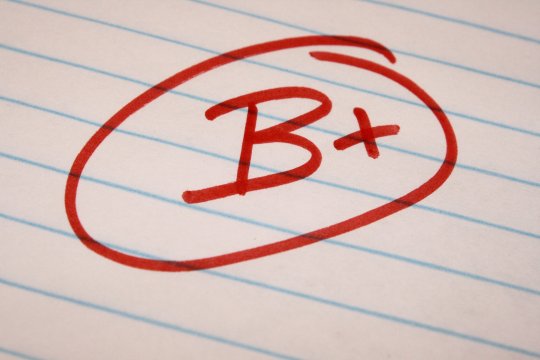
78 notes
·
View notes
Text
The 5 Components Needed For Music Industry Success
You might be about to study the 5 critical elements that have fueled the accomplishment of all good musicians' careers. Until you possess these crucial elements for yourself, it will be nearly not possible for you personally to reach your musical dreams and make a thriving career inside the music enterprise. Study beneath to discover these five essential elements and take action on the data you learn: Music Profession Success Key #1 - Don't Set Realistic Targets
youtube
All the most well-known and productive musicians did not reach their goals by thinking realistically about what seemed achievable. On the contrary, they focused their thoughts like a laser ONLY on what they definitely wanted. Once you make your ambitions in line with the points you need most, you will be much more motivated to actually accomplish them. More on this within a moment... Assume about this - out of your following choices, which selection would inspire you to place all of your time and power into developing a music profession?: Making a recording of a demo with a band and possibly playing a handful of shows around town. OR Writing chart topping songs to get a killer band, then advertising your music by going on a enormous world tour - playing to stadiums full of fans, earning tons of income from music sales alone and under no circumstances functioning a regular job ever again. Even though your goals in the music company are entirely unrelated to releasing music, the point nevertheless applies: do not let yourself accept something less than what you actually want inside your music career, just for the sake of getting realistic. Life is as well precious to reside it by not carrying out the items you seriously need. Whenever you set ambitions for oneself that don't inspire you, it can be almost guaranteed that you will Under no circumstances attain the points you definitely need in music. All the greatest rock stars are men and women just like you. They began compact - no matter if it was broke with out any notion how they'd make it in music, lacking in musical talent or not getting a band to play with... Just think about exactly where they will be now, if they would have told themselves that their music career dreams have been unrealistic or did not appear probable. Nicely, naturally they didn't... they followed their dreams and went on to achieve them! You need to do what they did. Start building your music profession by focusing on what you would like, not what appears feasible. Music Career Results Key #2 - Manifest Your Musical Dreams Into Reality Ahead of They Essentially Are Reality Musicians who in no way obtain something important in this market, create paths to their objectives by beginning from exactly where they are within the present moment. However, musicians who accomplish wonderful good results do one thing absolutely distinctive. They strategy their music profession by beginning in the end point of reaching their targets, and perform backwards to the present day. They imagine themselves obtaining currently achieved their big goals, then create their lives around this vision. This can be a a lot more productive way of accurately figuring out the actions expected for placing with each other your music profession. Music Profession Results Key #3 - Get started Living Or Get started Dying The two keys I described above are vital for constructing a effective music career. With this in mind, you need additional than just targets as well as a strategy of action to realize your musical dreams. You might have to take action every day to bring oneself closer to your targets. You may feel this can be frequent expertise, but you'd be shocked at how numerous musicians give up on their musical dreams just resulting from lack of effort (when it comes to taking physical action). Visualize this situation (I use this as inspiration for the specialist musicians whom I mentor): You have just discovered about a disease you contracted that requires main surgery. When you do not get this surgery, you might be guaranteed to die in no additional than half a year. To create matters worse, the surgery is very costly and cannot be covered by your insurance coverage business (also you cannot borrow funds to pay for it). So you have a decision to create: You are able to enable yourself to die, OR you may take what ever action is essential to get the cash needed for the surgery. Certainly this example is intense, nevertheless it is usually a ideal illustration in the kind of mindset you must have in an effort to develop a effective music career. Generating big moves (by taking action) inside your music career is completely diverse than sitting around waiting for items to take place for you (permitting your self to 'die'). With this in thoughts, tough work/consistent action doesn't necessarily equal music career good results, whenever you do not know precisely what you ought to be carrying out to attain your goals. Music Profession Achievement Important #4 - Have Enormous Reasons For Attaining Your Musical Objectives It doesn't matter what you do, a thing will often go wrong inside your music profession plans. Whenever you might be faced with unexpected events inside your music career, that is the time when your commitment will likely be put towards the test. For example, right here are some difficult conditions you could face: Functioning at each day job you hate though regretting the truth that you in no way developed a music career backup plan to assist you make a living undertaking what you really like. Playing at crappy bars all of the time together with your band mainly because you do not understand how to move to larger venues. Wanting to record an album, but doing so at an extremely slow and frustrating pace since you by no means practiced establishing your recording capabilities. Working with unmotivated band members who are bringing you (and also the complete band) down. Not understanding tips on how to attract much more music fans to listen towards the music you worked so difficult to create. Right here is what you might want to do in order to keep your commitment and dedication to achieving your music profession goals: Take out the piece of paper you've got that contains the list of one's written targets (that you put with each other in crucial #1 above). Then beside each and every a single create down the large Causes you may have for pursuing them. For every single musical purpose you might have, answer this question: "Why do I desire to accomplish this?" Spend plenty of time considering about this for each and every aim ahead of you write down your response, and look more than your goals/reasons two instances every day. Whenever you do that, you'll create the ability to keep motivation and stay focused around the important causes you've got for reaching your goals. This will allow you to move forward in the tricky occasions when your dedication is put to the test. Music Career Accomplishment Crucial #5 - Do not Endeavor to Make Your Music Profession Blindfolded Once you're in possession of all 4 keys described above, it really is nevertheless probable that your music career will go nowhere. This occurs if you lack certainty about what to accomplish to attain good results, are (unknowingly) sabotaging yourself or lack powerful strategies to assist you attain your musical targets. The last important expected for developing your effective profession in the music market would be to train having a mentor who has knowledge helping musicians take their careers to the highest level. A definitely powerful mentor won't basically inform you what you need to be carrying out as a way to succeed in the music organization. He will help you make use of all of the strengths you constructed when developing the initial 4 keys and can hold you heading down the proper path toward good results, whilst preventing you from generating the exact same mistakes that unsuccessful musicians make. Devoid of this sort of instruction, you are primarily attempting to develop your music career using a blindfold on - entirely oblivious for the very best approaches to succeed using your current skills and know-how. To know more details visit here: Kevin Cameron Johnson
0 notes
Link
We’ve run our 11 Best Single Issues Of The Year. Well now, Rich Johnston and the Bleeding Cool writers (not Jude) give you 11 collections and graphic novels to reflect on as we say good riddance to 2016 and welcome 2017 with nervous worry.
Eliot Cole
Doctor Who: A Matter Of Life And Death by George Mann, Emma Vieceli and Hi-Fi.
I don’t have quite as much to say here as I did in my “lack of words” on A-Force #4, but I find this Eighth Doctor collection just the lovely example of (a) comics and (b) what could’ve been with the best of all the doctors. George Mann’s stories are each self contained, following the fantastic journey of Josie, and how she becomes part of Eight’s life. Each story was a book, and was self contained, but lends well to the whole. I wrote 3 sentences on George Mann’s awesome plotting (and such), and having a good take on 8 but they amounted to that word, “awesome.” Emma Vieceli’s trademarked panelling design compel you through this beautifully, I could genuinely read pencils of this quality on anything. Ms. Vieceli is surely meant for the greatest of things. Do yourself a favour and check out Titan’s Eighth Doctor Collection.
Jeremy Konrad
The Fix Vol.1-Where Beagles Dare by Nick Spencer, Lieber, Ryan Hill, and Nic J Shaw
I actually was starting to feel a little burnt out by Image this year. Quite a few of their series were blending together and felt to be covering quite a bit of the same ground. That all changed when I picked up The Fix. This series, with its dry, sarcastic humor and panels that you have to study to catch every little gag in the details very quickly became one of my favorites. And I mean, Pretzels. How can you not love a dog like Pretzels??? Every issue gets better and better, and hopefully it runs for a very long time.
Hannah Means-Shannon
Aleister & Adolf by Douglas Rushkoff, Michael Avon Oeming, and Nate Piekos
This book has been an outlier on many press radars, but it’s one of those densely crafted, significant works that hopefully will be the gift that keeps on giving, showing comic creators and fans what new directions in the medium can be taken. Written by powerhouse social critic Douglas Rushkoff and drawn by the endlessly original Michael Avon Oeming the book tracks a fictional account of Aleister Crowley’s media wars with Adolf Hitler based on a few key historical facts. It follows the life of a young military reporter assigned to Crowley through the course of “sigil” developments, like the swastika by the Nazis and V for Victory by Churchill in the war over human minds during WWII. Rushkoff’s characterization, research, and narrative framing devices, combined with Oeming’s emotive and often highly symbolic artwork make sure this book has something significant to say about the ongoing role of symbolism and propaganda in the way we see the world around us. It might just remind you of the dangers and the positive powers of belief and focus to influence any struggle, even on an international level. Aleister & Adolf may be about the second World War, but it’s highly relevant to our times and makes for a thought-provoking, and at times disturbing, read.
Joe Glass
The Wicked + The Divine Deluxe Hardcover by Kieron Gillen, Jamie McKelvie, Matthew Wilson and Clayton Cowles.
I mean, just look at it.
Let’s not even go into the story or anything yet, just take in this huge, black, hot foiled beauty! You can read comics on your train to work looking like you’re reading out of some mystic grimoire of mystery!
Plus, it contains Kieron Gillen, Jamie McKelvie, Matthew Wilson and Clayton Cowles’ incredible series of pop stars as gods and the hard price of fame (it kinda kills you in the end, which 2016 proved in force really, didn’t it?). Collecting the first two story arcs, plus loads of behind the scenes materials and a good chunk of Gillen’s breakdowns of the book, it makes for the absolute best purchase for fans of the series.
And it just looks sexy as hell on a book shelf!
Abdulkareem Baba Aminu
Huck by Mark Millar and Rafael Albuquerque.
Surprising myself, and after a great deal of thought, I have picked Huck Vol. 1 by Mark Millar and Rafael Albuquerque as the best graphic novel/collection for 2016. I started reading the monthly issues, up to the second, and I somehow fell off. But I did know I’d catch up on the trade when it gets released. And boy was I glad I waited. The story, collected, had a pace that was missing during its monthly run, and the character development proved to be near-perfect. Early comparisons to Superman did no justice to the story of a small town resident who’s revealed to have some truly awesome powers, of course with disastrous results. The art – oh, boy the art – is beautiful, aided by perfect colours and it sets the tone the right way. There’s almost a Spielberg-ian sense of wonder and adventure to the tale, enough to make me ignore the irritation that is an editing error which portrayed a factual kidnapping of schoolgirls by insurgents as having happened in East Africa, when the stated Sambisa Forest is in Nigeria, in West Africa. You could say it was personal for me. That aside – and I truly enjoy most of the Millarworld books – Huck is my absolute favorite.
Marilyn Weiss
Nameless City by Faith Erin Hicks
I was so excited for this graphic novel to be released, it was easily one of the highlights of my reading this year. We meet Kaidu, a recent arrival to the Nameless City, and son of the latest ruling clan, Dao. As he trains to become a warrior, his adventurous nature drives him into the city, where he meets up with the lovable, street wise Rat. Hicks did an amazing job creating a detailed world that I would love to explore and get lost in. I can tell that there are so many stories hiding within the city, just waiting to be told. I would gladly hand this book to any fan of comics, be they young or old. The sequel, The Stone Heart will be out in April 2017.
Rich Johnston
Patience by Dan Clowes
I’m a sucker for a post-modern time travel story. See my love for least year’s There’s No Time Like The Present by Paul Rainey. And Dan Clowes gives us actual plottage with Patience. A story of rags to – well not exactly riches, but a different state of being, as the newly pregnant young Patience is murdered, a series of events that destroys her partner, Jack. It’s his attempts to “put right what once went wrong” and the calamitous consequences of his actions, digging his own grave – or Patience’s – deeper and deeper that drive this book forward. Or backwards. Which means you’ll have to reread it the moment you finish for that Sixth Sense experience. But for all that it’s the attitude of Jack, the anti-Hollywood hero that sets this apart, refusing to follow the obvious tropes or experiencing triumphs – or disasters as he may be expected to.
And the devil is always in the details. Clowes has always had a style that grabs the eye, gives it direction and pulls it forward, the narrator grip in full effect. Here every object in every panel could have serious significance that you will need that second – or third reading to pick up on it.
Toward a Hot Jew by Miriam Libicki
You know those overnight sensations who have been working hard at the craft for decades? That’s Miriam Libicki. In something that resembles the missing link between Marjane Satrapi and Joe Sacco, her autobiographical work exploring her Jewish identity, attractiveness and the reaction of those around her, whether as a Israeli soldier or a professor of art, this collection of a decade’s work jumps from illustrated essay to comic book panels, exploring the medium, the tools to create the work and express inner neurosis as beautifully – and as ugly – as possible.
Black Dog: The Dreams of Paul Nash by Dave McKean
Art about art – Dave McKean creating a comic about war artist Paul Nash, and how that artist turned the worst extremes of humanity into art that illuminated the mind. And then how it affected the young Dave McKean, and how his work has existed in relation to that of Paul’s. This is a giant standing on the shoulder of another giant and between them they can see so much about us. An incredibly moving masterpiece, and stands alongside McKean’s Cages, as an exploration of the effect of art on both the viewer and the artist themselves. Psychologically complex and using the very strictures of comic book panels, speech, character positions to demonstrate so much of what we are.
Rolling Blackouts by Sarah Glidden
Another example of comic book journalism, Sarah Glidden takes a trip to the Middle East with an eye on America’s influence on the region, travelling through Syria, Iraq and Turkey. But its also an examination of journalism itself, as Sarah is accompanying two “proper journalists” as they look at the effect of the Iraq War and of its refugees, so it also becomes a procedural for the profession as well – especially when they are joined by a friend and a US soldier who served in Iraq. And it suddenly gets a whole lot more awkward. Something that is made more palatable by Sarah’s soft watercolors, a different look than we might have otherwise expected.
Everyone has a story to tell. It turns out that’s as much true of the journalists as it is those they report on.
Clean Room Vol 1: Immaculate Conception by Gail Simone, Jon Davis-Hunt and Quinton Winter.
For some reason I never find The Walking Dead comic as gross as I do the TV show. I occasionally wondered if that was a creative choice of the limitations of the medium? Well, Clean Room answered that. It really is something very nasty indeed. Writer Gail Simone has rarely been given the chance to operate at this level. And she choosing the tack of making the people far scarier than the Entities that are meant to be threatening them, in terms of the moral choices they hold. Jon Davis-Hunt’s choices of style are also a surprise, eschewing the darkness for something brighter, more visible and cleaner. This is horror with the strip lighting turned up and refusing to blink.
It also takes suicide head on, as something fuelling the survivors, and as psychological as that is, the comic is never afraid to shlock-horror out, embracing that aspect rather than being embarrassed about it. It’s the combination of both approaches that elevates this title above the norm and makes it something special. And the way it buolds from issue only helps the trade paperback – even if you are denied the pain of waiting from month to month for cliffhangers to resolve.
Buy this for the Scientologist in your life. And then get Gail Simone to write Crossed.
Bleeding Cool’s 11 Favourite Graphic Novels/Collections Of 2016
0 notes